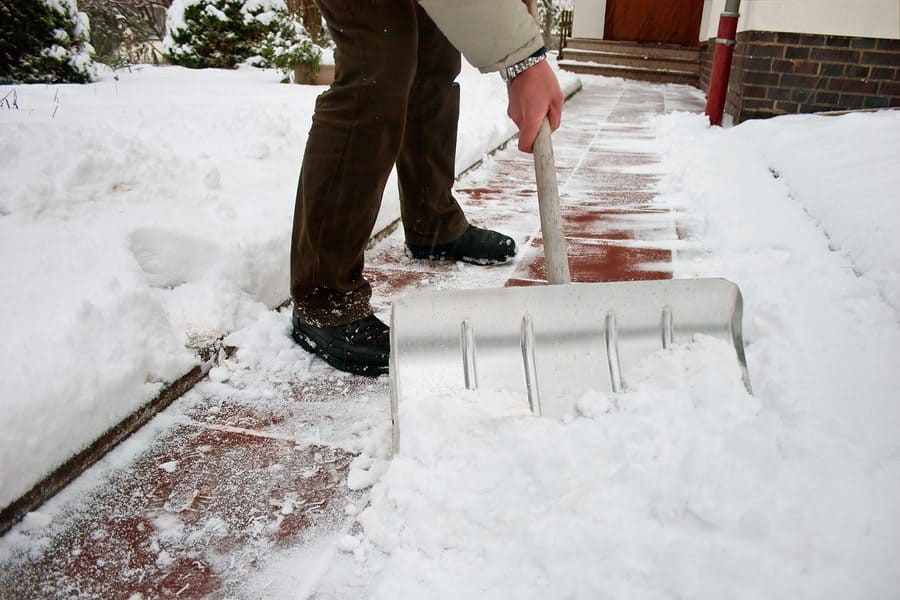For children and teens, there is nothing quite like that first major snowfall of the year. The first snow often brings an unexpected day off from school and a day of carefree play in the freshly fallen snow. But for adults, the first snowfall of the year isn’t without its risks and drawbacks as snow and ice on the ground means that there will, unfortunately, be slippery conditions present for walking and other forms of travel. Unfortunately, when slippery, icy or snowy conditions are present, the likelihood of a slip and fall accident or another type of premises liability accident greatly increases. Despite the simple mechanism of injury, a slip and fall accident can lead to serious injuries such as a fractured ankle, a broken leg or other physical impairments. Some injuries can take months to recover from while undergoing intensive medical care and physical therapy. Injuries due to a slip and fall can result in tens of thousands of dollars in medical bills and further damages in the form of lost wages and pain and suffering.
And yet, perhaps due to the unique law in Pennsylvania, many residents of the state are unsure or unclear of what their duty is in regard to clearing ice and snow from their sidewalks and walkways. Furthermore, many are unsure of the factors that may indicate that they have a strong claim. This post will analyze and explain the state of the law in Pennsylvania regarding slip and fall injuries on ice and snow.
What Actions Does Pennsylvania Require a Landowner to Take?
Perhaps the best way to understand the actions that the law requires a Pennsylvania landowner to take when generally slippery conditions, like those after a snowfall, are present is by working backward from the instructions that can be provided to the jury. In the 1992 case, Marmotta v. Bender, the trial court instructed the jury that in order for the plaintiff to establish that landowner liability applied when generally slippery conditions were present, the plaintiff would need to prove “that the snow and ice had accumulated on the lot in ridges or elevations of such size and character as to unreasonably obstruct travel and constitute a danger to pedestrians traveling thereon; and that the [defendants] had notice [,] either actual or constructive, of the existence of such condition … and … that it was this dangerous accumulation of snow or ice into the ridges or elevations which actually caused the [wife] to fall.”

In short what this type of jury instruction does is it describes the hills and ridges doctrine that was established in the Rinaldi case (1962). The doctrine protects landowners from the imposition of premises liability when generally slippery conditions exist unless a plaintiff can prove 3 items:
- Snow or ice accumulated on the sidewalk in quantities such that that hills and ridges form. The hills and ridges were of sufficient nature to unreasonably obstruct travel and are a danger to pedestrians
- The landowner or the individual with control of the property knew of the dangerous condition or had reason to know of it.
- The snow or ice accumulation caused the individual to fall and injure themselves.
Thus, when there is a natural accumulation of snow, the hills and ridges doctrine must be satisfied for liability to attach to the property owner. However, the hills and ridges doctrine is not without its limits. Since the 1960s it has been held by Pennsylvania courts that the doctrine applies only when the accumulation of snow or ice is due to an entirely natural accumulation. Rinadli v. Levine, 406 Pa. 74, 176 A.2d 623 (1962). Furthermore, the hills and ridges doctrine applies solely when there is a generalized slippery condition and it does not apply when slippery conditions are merely localized, such as in the case of a single icy patch. Tonik v. Apex Garages, Inc., 442 Pa. 373, 275 A.2d 296 (1971). Additionally, the doctrine would not apply if the slippery conditions were the product of negligence such as the failure to repair a leaking pipe.
What if a Landowner Fails to Clear Ice and Snow and I am Injured?
As discussed above, if a landowner has failed to clear ice and snow from his or her property and an injury has occurred, whether liability is likely to attach is an extremely fact-sensitive determination. Factors that commonly influence whether the landowner’s conduct could be considered negligent or improper include:
- The storm’s duration
- The amount of snow or ice accumulation
- The amount of time elapsed between the snow or ice fall and the injury
- The type of property
- The surface that the injured individual fell on (sidewalk, road, grassy area, parking lot, etc)
- Whether actual or constructive notice was provided
For instance, consider the decision in Alexander v. City of Meadville where, on February 9, 2008, an individual slipped and fell on localized icy conditions present in front of a business. Alexander v. City of Meadville, 61 A.3d 218, (2012). The business claimed that it had not been negligent because it had dutifully cleared ice and snow accumulations from its sidewalks during business hours. The company, however, did not clear ice and snow from the walkway when the business was not open such as was the case with this injury. The court found that liability could not be imposed on the company because despite its duty to keep that particular stretch of sidewalk clear, “[it] would not have had notice of the accumulation of ice and snow, nor would it be proper for us to hold that it should have known of this condition at the time of the accident.”
Perhaps underscoring the close factual analysis necessary for cases of this, consider the contrasting result in Harvey v. Rouse Chamberlain, Ltd., 901 A.2d 523 (Pa. Super. 2006). In this matter, ice and snow had begun to accumulate the day prior to the January 2001 accident. While the streets had been plowed in the plaintiff’s development, many of the sidewalks had yet to be shoveled. When the plaintiff reached a particular un-shoveled sidewalk, she decided to walk in the street which appeared to be the safer option. While walking in the street, plaintiff slipped on black ice. The trial court determined the matter to be a non-suit based on the fact that black ice is a natural condition.
The Pennsylvania Superior Court reversed finding that the black ice was the result of human intervention – chiefly the snow plowing activity – and therefore the hills and ridges doctrine was inapplicable. Absent this defense, the matter should have proceeded to the jury to determine whether the failure to treat a black ice condition constituted negligence.
In short, while many plaintiffs in slip and fall accidents following a snowstorm or ice storm must overcome the pro-defendant hills and ridges doctrine, the doctrine is not universally applicable. An experienced personal injury attorney can analyze the facts and circumstances present in your premises liability accident to determine an appropriate legal strategy and your likelihood of recovering compensation. For your free and confidential premises liability consultation, call the attorneys of The Reiff Law Firm at (215) 709-6940.













